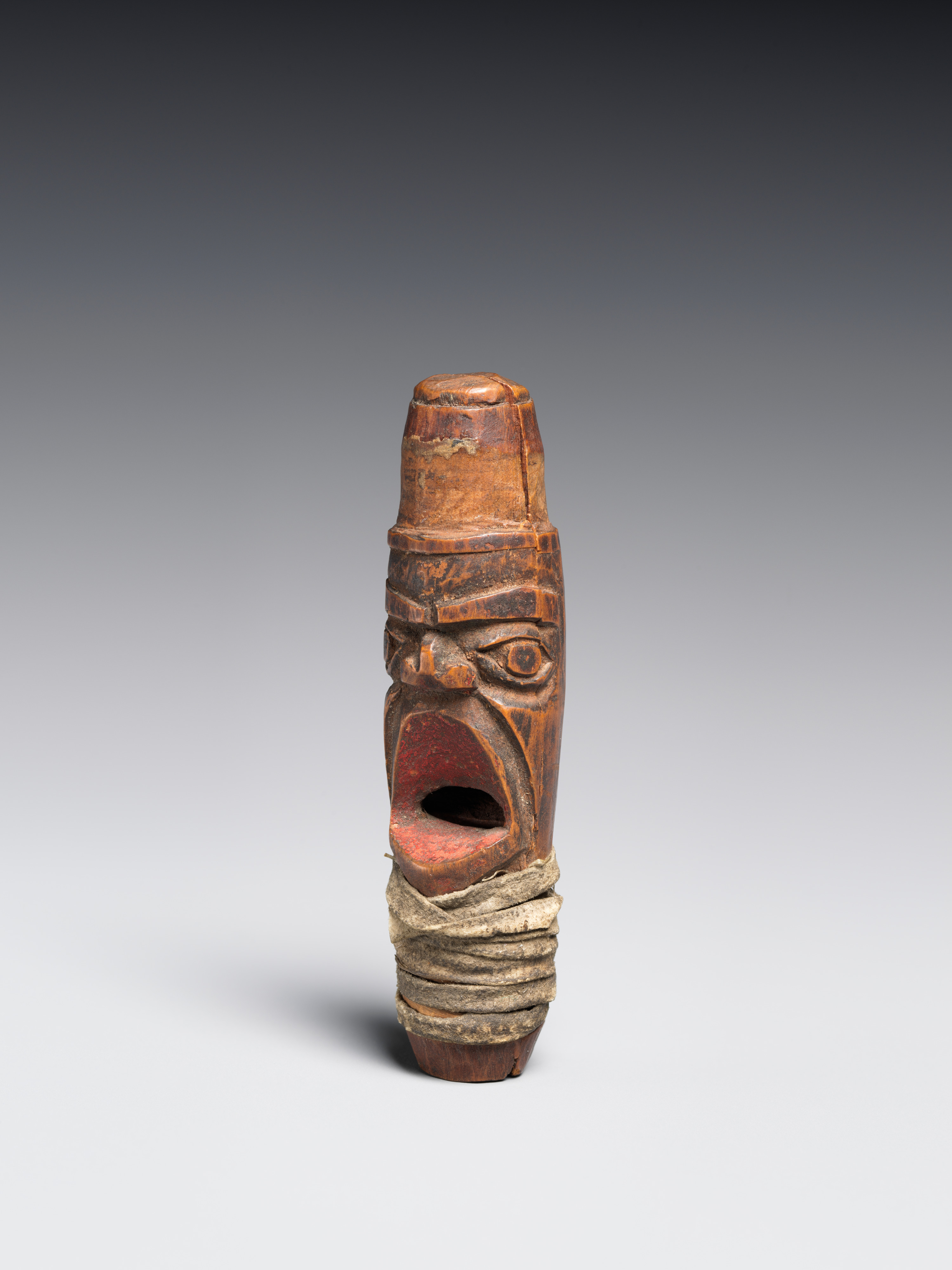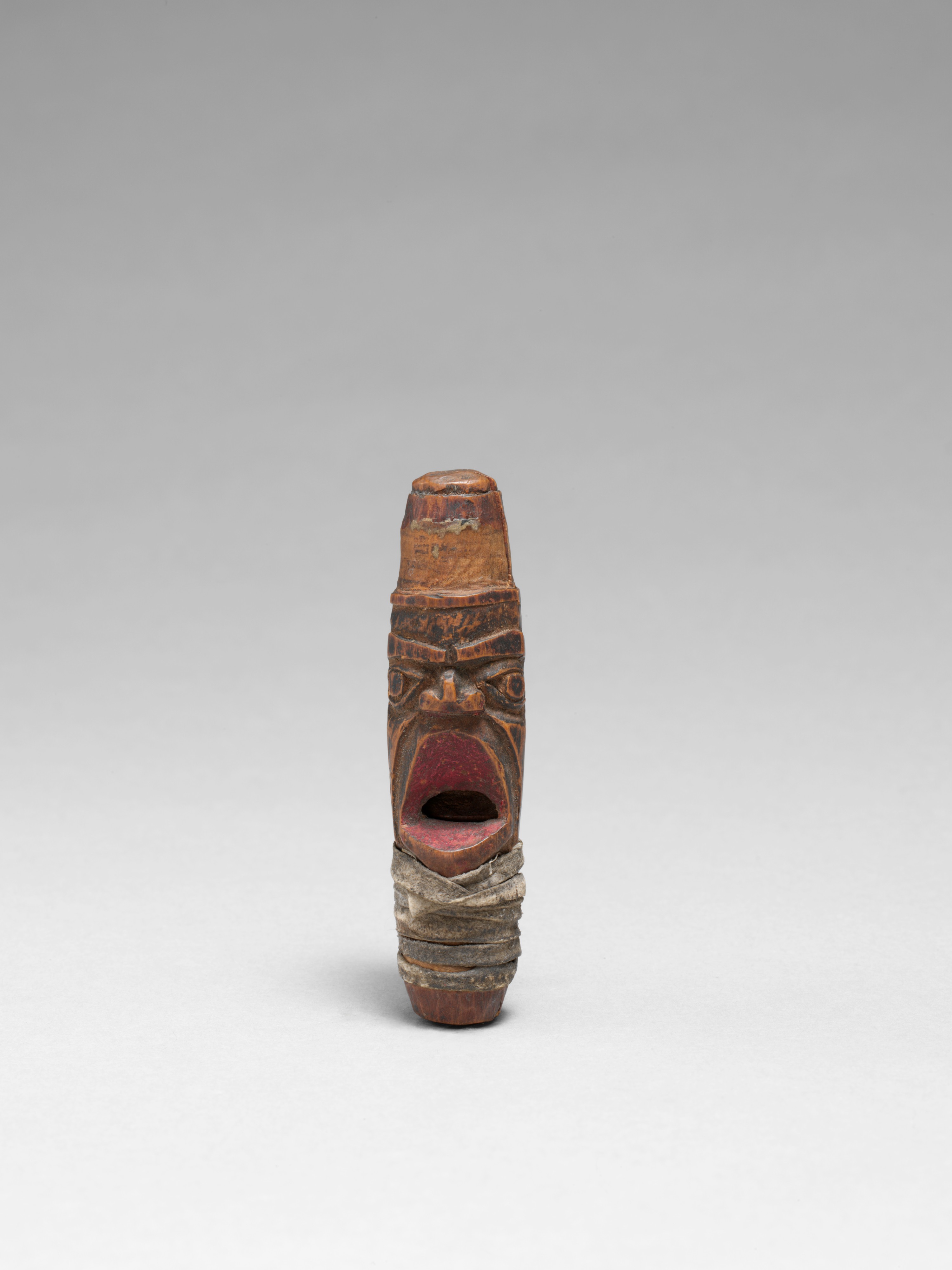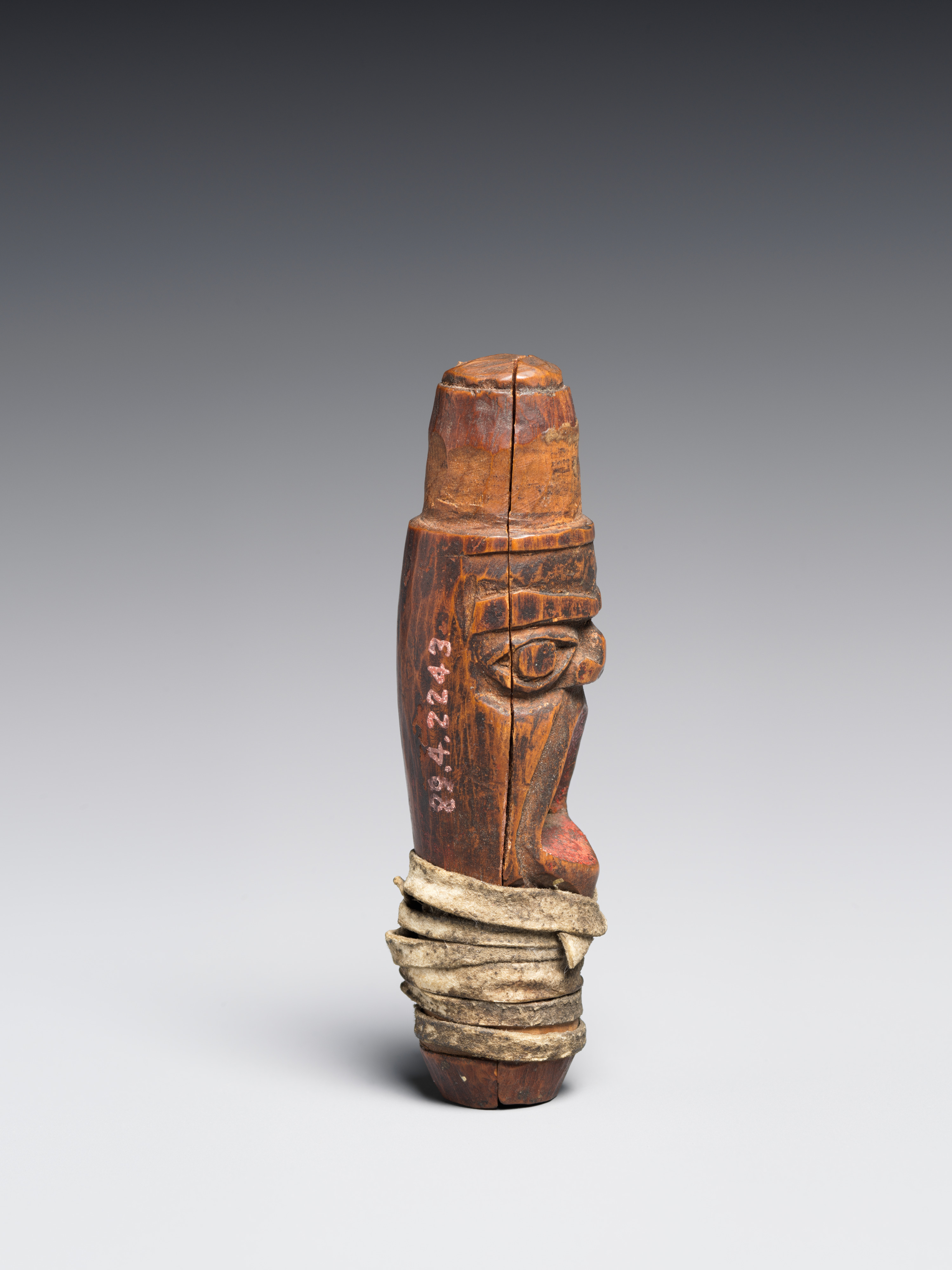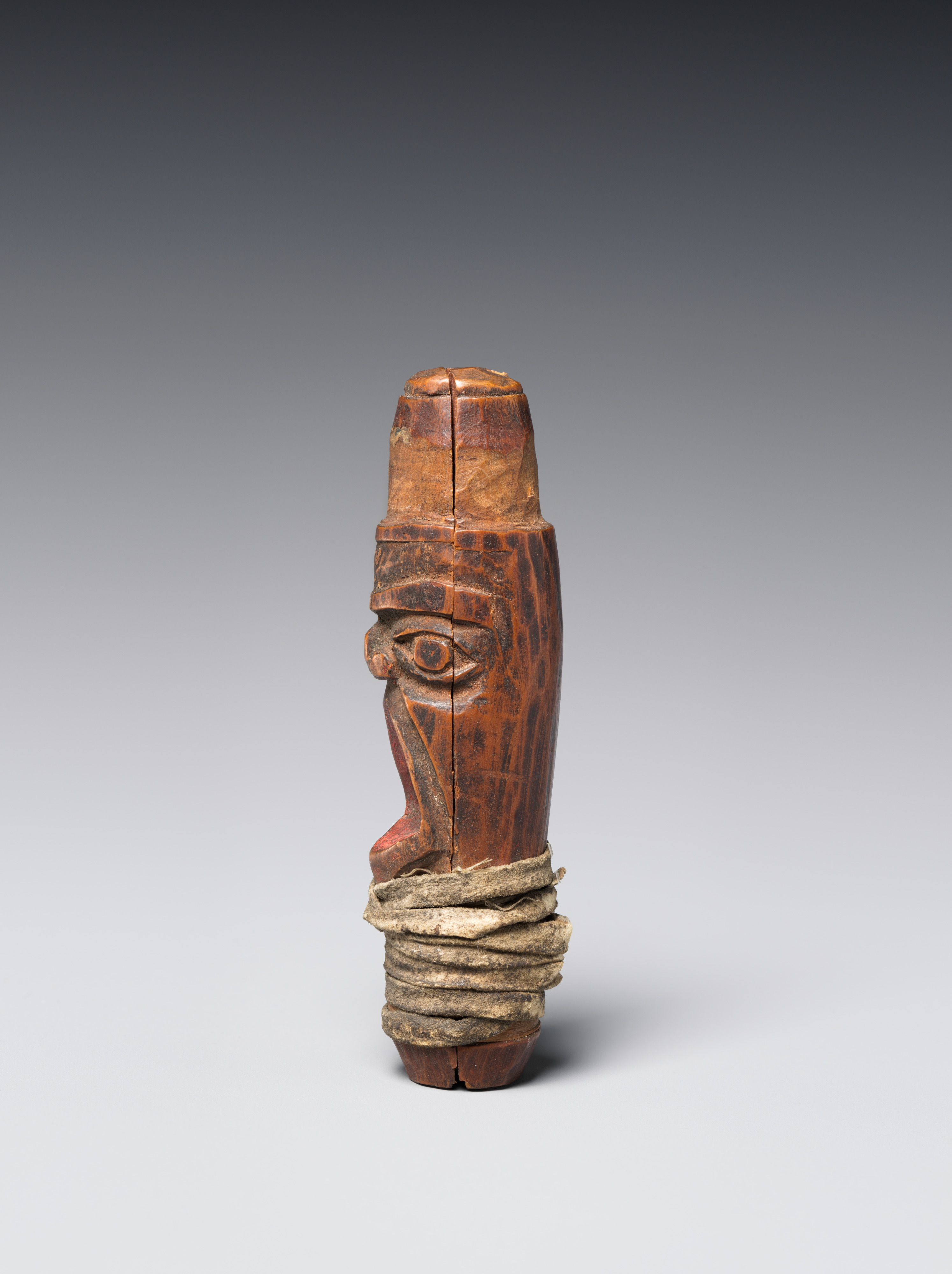Whistle
Native American (Northwest Coast)
Not on view
Throughout the Northwest Coast, whistles of varying shapes and sizes are used to augment the ritual music associated with dancing. This whistle is constructed of two pieces that have been lashed together—the upper lashing is now missing. A stylized human face is carved around the cylindrical form, the mouth corresponding to the duct window of the whistle. Pigment has been used to intensify the grooved surface features of the whistle. Much of the dance traditions of the region incorporate a degree of transformation; whether it is visually apparent is inconsequential. In some instances, elaborate masks and regalia are employed to convey transformation, although these are not requisites for spiritual transcendence. The use of whistles, sometimes disguised as part of a dancer's regalia, is common to most dances. Some whistles—large and small—employ bellows to sound them and can consist of multiple whistles lashed together. The sound produced by whistles typically represents the audible manifestation of spirit beings, so, too, are whistles carved to visually depict spirit beings or ancestors.
This image cannot be enlarged, viewed at full screen, or downloaded.
This artwork is meant to be viewed from right to left. Scroll left to view more.






